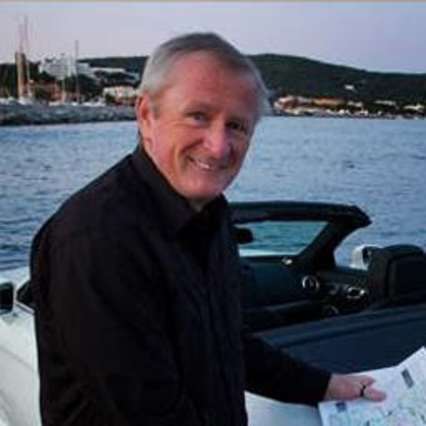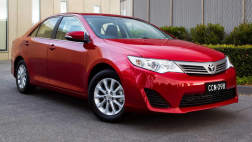Detroit is like that.
Carmakers go all out to make an impact at the first big car show of every year, knowing they have to do something special to achieve a breakthrough at an event that has produced many great concepts and some critical production cars.
For 2007, Chrysler had the Nassau, Jeep had the Trailhawk, Chevrolet had the Camaro convertible, Jaguar showed the C-XT, Ford unveiled the Interceptor and Nissan had the wonderfully ugly Bevel — all concept cars.
There was also the Holden Efijy concept, which generated a surprising amount of interest.
Japan's brands sparked a performance battle with previews of the next Honda NSX, the near-production Lexus LF-1, the Toyota Supra hybrid and the production model of the forthcoming Mitsubishi Lancer X Evo.
Mercedes had a four-door S-Class convertible and showcased its 4Matic all-wheel-drive system with an indoor ice-skating rink on its stand that came with an S-Class and GL slip-sliding around to prove that grip and drive and control are possible on even the most slippery surface.
"It cost a motza. Well into six figures," a Mercedes-Benz spokesman says of the rink.
The real bill was more than $1 million, paid direct from Benz headquarters in Stuttgart, but that's not unusual at Detroit.
A typical concept costs at least $1 million — though Jaguar says it spent less on the C-XT — and the big carmakers spend upwards of $250,000 on a single stage-managed "reveal" at the show.
Cadillac had a classical string quartet and a pair of black rappers with violins. Chrysler had an African drum team. There were rock bands, smoke screens and what looked to be the world's supply of giant plasma screens.
But all the staging and showbusiness was still trumped by the cars and the company officials, who talked about design, technology, driving and sales.
"Detroit has become probably the most important show on the circuit," Jaguar design director Ian Callum says.
Expatriate Australian Geoff Polites, who heads Land Rover and Jaguar in Britain, agrees, saying: "If you go back 10 years it was literally a dealer show, but the manufacturers now see Detroit as a significant platform. It is fast becoming the main show in the world."
Detroit has also become a global melting pot at which American, European, Japanese and — for the first time — Chinese brands go all-out to impress.
It was also the event where General Motors' vice-chairman of product development Bob Lutz gave the official-unofficial go-ahead for plans to export the Holden Commodore SS to the US as the Pontiac G8.
Lexus decided to go after the M and AMG divisions at BMW and Mercedes with an IS500.
Porsche showed the facelifted Cayenne.
Toyota unveiled a giant Tundra pickup — complete with a hot TRD version — to go chasing the Ford and GM trucks that dominate the top end of the sales charts in the US.
But which was the most significant car of all.
"It has to be the GM Volt," the vice-president of industry analysis at AutoPacific, Jim Hall, says.
He is a veteran showgoer and one of the most respected analysts in the American car business.
"This is the world's largest carmaker staking its future on a new technology that it does not own or control. Very brave," he says of Volt.
The Volt is a plug-in hybrid that points to a new technology called E-Flex that has the home electricity grid or an on-board engine charging a car's lithium-ion batteries.
These provide all the power to drive the wheels, making any E-Flex car into a genuine electric car and a potential rival to the petrol-electric hybrids touted by most other car companies.
Detroit produced plenty of talk about showroom comebacks, particularly by GM and Ford — which both regularly post quarter losses in the billions — and future hopes.
But was it a great show? Not according to Hall.
"It was not a good show," he says. "There was only one car that surprised anyone and that was the new production Lexus LF-A. The rest of the stuff was all pretty predictable."
SHOW NOTES
* The Holden Efijy concept was a huge hit and won some new fans. They include hip hop superstar Shawn "Jay-Z" Carter, who has won permission for the retro coupe to star in his next music video.
* Several US concepts had Michelin tyres with a hand-cut tread pattern including the North American International Auto Show logo.
* When Bill Ford began the Ford presentation he talked about the event celebrating the centenary of the show. "At this show in 1907 my great grandfather announced plans for his T-Model."
* There was a lot of talk at the show about cars that can run on E85 fuel. It is an 85 per cent ethanol blend that is being promoted as a green choice throughout the US.
* There was a large Australian contingent led by Jaguar-Land Rover boss Geoff Polites and Kevin Wale, who heads GM China. Apart from the fly-ins — everyone from Holden design boss Tony Stolfo and Chrysler chief Gerry Jenkins to GM Holden boss Denny Mooney and Ford president Tom Gorman — they included Michael Bartsch, who is head of sales and marketing at Porsche North America, and Mike Simcoe, the designer in charge of GM operations in the US.



.jpg)







.jpg)



.jpg)













.jpg)
Comments